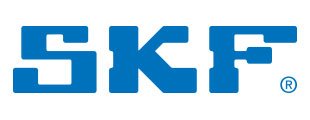Selecting the most appropriate digital technologies – and implementing them in a practical way – will help manufacturers improve machine output and provide a better service to their customers, says Bernie Van Leeuwen, Product Development Director at SKF.
We are in the midst of a digital revolution. Simple electronic products have been transformed into very advanced devices while actually simplifying the use of them: in the short time since mobile phones were introduced, for instance, we have already progressed to smartphones – which are nothing short of powerful mobile computers.
The revolution that we see in the consumer world is mirrored in the manufacturing industry. While there is still a long way to go, many industrial companies are undergoing ‘digitalization’ in order to boost productivity and efficiency, improve product quality and make supply chain improvements.
A prime example of digitalization is seen in condition monitoring – where the introduction of multiple sensors helps to lengthen machine life by keeping a constant watch on the health of components like bearings.
Digitalization will help companies to prepare for the advent of Industry 4.0 – which will see ever-greater interconnectivity between machines and devices, and ever-increasing use of big data. The eventual aim is to connect the whole value chain together – and this will begin with small steps into digitalization.
Some manufacturers may be tempted to go ‘all in’ by digitalizing their entire operation. However, a better approach is to choose the desired level of digitalization by dipping into a digital ‘toolbox’ – and selecting from the many available technologies to achieve particular goals.
In the ‘physical world’, a toolbox is a place to keep everything needed to complete a job – be it a hammer, wrench or screwdriver. A similar approach can be taken in digital terms. A ‘digital toolbox’, therefore, is a suite of products and services – such as sensors, measurement equipment and reporting software – that can be individually selected in order to improve overall performance and efficiency.
SKF approach
At SKF, we think it is important to take customers through digitalization in terms that they understand and see value from: many have said that we make this easy for them. We try to understand the customer’s exact situation, and explain how digitalization could help them. It needs to be practical and specific – and not ‘theoretical’.
SKF’s primary expertise is in bearings. This will continue – although the way in which SKF provides that expertise will change.
We will continue to help customers improve their Rotating Equipment Performance (REP) – which in turn helps them achieve three major goals: reduce costs; increase output; and comply with legislation. This will increasingly be achieved through digitalization – such as adding sensors to machines, combining different data sources, analysing by combining the data with our application expertise and providing the right recommendations for corrective actions in an early stage and in real time.
SKF can help customers introduce digitalization strategies without them having to make capital investments. Instead, all the necessary infrastructure needed to gather, process and act on the data is included within an all-inclusive service package. Our ‘Rotation for Life’ model, for example, is a performance-based contract that enables a company to move towards digitalization: for a monthly fixed fee, SKF can help improve the performance, uptime and output of a customer’s machine, using a variety of digital technologies.
While the technology itself is vital in gathering and crunching the data, it is the remote diagnostic service – where SKF experts interpret the data and make recommendations – that ensures optimal performance. Big data is the currency of modern industrial performance, but must be properly interpreted if it is to be of maximum use.
No restrictions
Digitalization can be applied to any business. We’ve seen mining companies adopt it as readily as automotive companies, once they understand its benefits. And the adoption of digitalization is not only for newbies and tech-lovers, we have seen very senior and experienced engineers who are similarly enthused – saying it can deliver what they could previously only dream about. It is an issue of mentality rather than experience.
As with any new concept, there is a degree of resistance. Some companies operate in ‘silos’, for instance – and this is a difficult situation to overcome.
In these cases, the transparency that digitalization offers threatens their way of working: if all the data is available, the production manager will be sharing his performance indicators with for example the maintenance manager and vice versa, which may initially cause more dispute then additional insight. This can require radical cultural change: it may need somebody to oversee how the data is being used, for instance; but it could also shift some decision-making to people further down the chain.
Some customers have admitted that they struggle with too much data, and don’t want to be burdened with “any more computer screens”. In truth, they have probably gone about digitalization the wrong way, and not thought about what they need the data for, or how they will use it. They have simply added some sensors to their operation, because they felt under pressure to digitalize. In cases like this, we recommend that the customer go through a process audit. This is because process knowledge and process data are vital in order to understand how a machine is working – and how its performance might be improved.
We have a phrase in SKF: ‘Everything you need, nothing you don’t’. This means that user interfaces only show what the user needs. For instance, our QuickCollect sensor is capable of showing huge amounts of information, but we have designed it to show only what the customer needs. By streamlining our product portfolio, we make things seamless for the user.
There’s a lot of mystique about digitalization, but it’s really no more than a tool to boost performance and make life easier for customers – by giving them ready access to reliable data. Customers don’t want to worry about bearings and lubrication: they just want their rotating equipment to work. Digitalization is the tool that ensures that this happens – and is now at everyone’s disposal.






